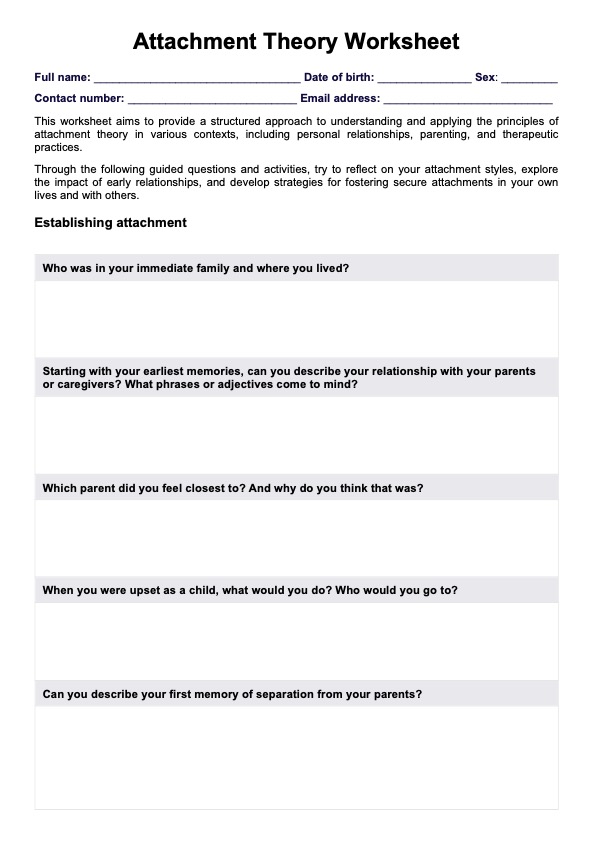While attachment styles established in infancy can have lasting effects on healthy human development and the formation of close relationships in adulthood, they are not set in stone. Later experiences, interventions, and relationships can evolve and influence them. Individual and family therapy, self-reflection, and future relationships can contribute to changes in attachment styles throughout life.

Attachment Theory Worksheets
Understand anxious and secure attachment styles with this informative guide and our downloadable Attachment Theory Worksheets.
Attachment Theory Worksheets Template
Commonly asked questions
Attachment styles significantly influence how individuals approach and navigate relationships in adulthood. Understanding one's attachment style can help recognize and address relational patterns, foster healthier connections, and improve communication and emotional regulation within relationships.
Attachment styles impact mental health: secure attachment supports emotional regulation and well-being, while insecure styles can lead to stress, dysregulation, and poor coping. Understanding attachment aids therapy, promoting resilience and emotional health.
EHR and practice management software
Get started for free
*No credit card required
Free
$0/usd
Unlimited clients
Telehealth
1GB of storage
Client portal text
Automated billing and online payments











